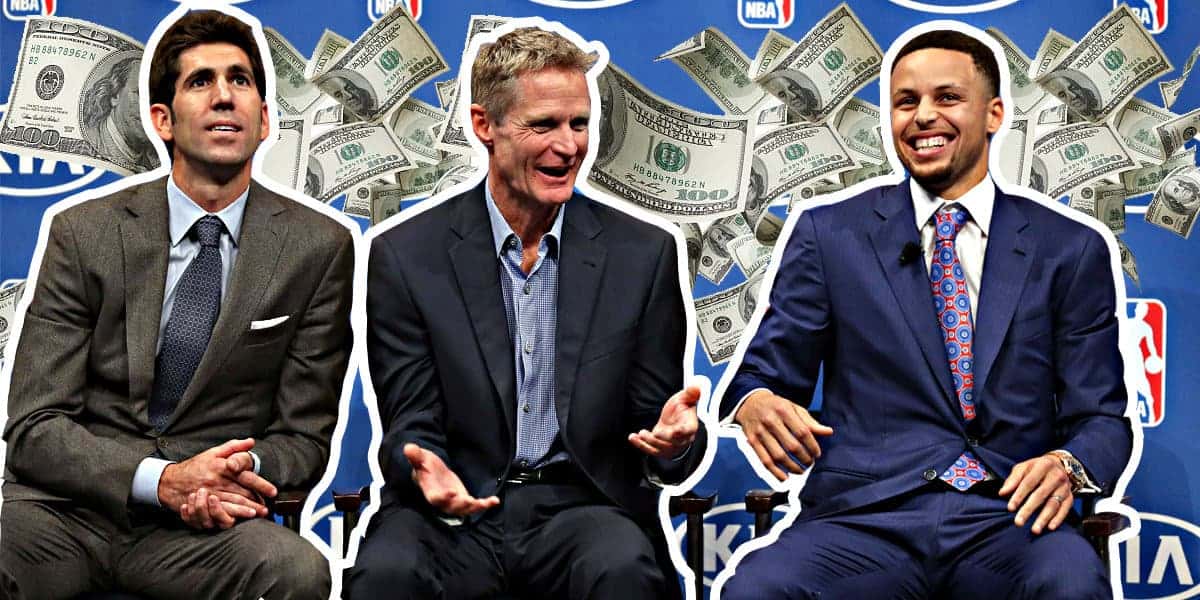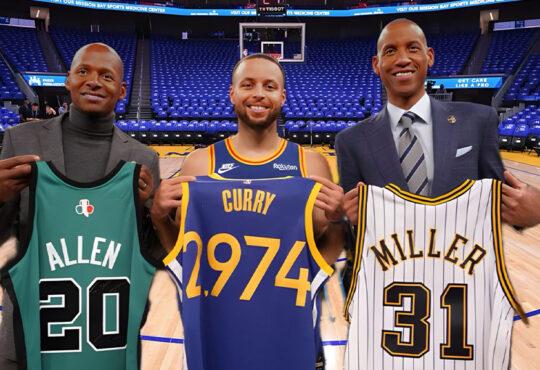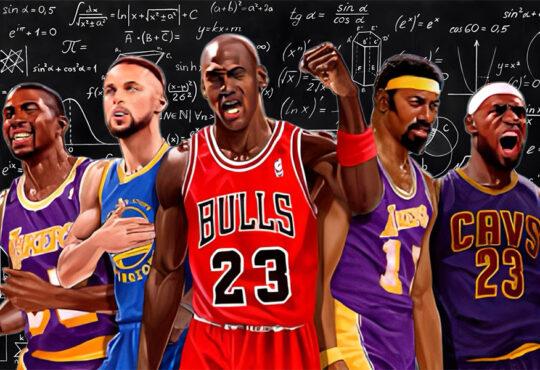
How Do NBA Contract Buyouts Work?
How Do NBA Contract Buyouts Work? The NBA trade deadline oftentimes can be one of the most exciting parts of the NBA season and it doesn’t even involve on-court action. There are blockbuster trades that can turn a team’s season around and trades that catapult a team from contender to championship favorite. We see it every year and once the deadline passes the casual fan usually stops paying attention to team and personnel moves.
But moves can still happen in the NBA even after the trade deadline has come and gone, and these moves usually involve what is called a buyout. Teams are able to add or drop players from their team through the buyout process in order to add a bit more depth to their roster. Buyout players aren’t stars that will change the entire dynamic of your team, but they can play a key role in the rest of your season straight through to the NBA Finals in some players’ cases.
But what exactly is a buyout? Who are some notable buyout players from the past? And, probably most important, why does this all matter to a team?
What is a Buyout?
A buyout involves a player and team that want to part ways, leading to the player surrendering a specific sum of their contract in the process. The sum of money is usually not for the full amount that their contract is worth, and is usually agreed upon between team and player in order for them to seek other teams. If a team buys a player’s contract out, they are not allowed to pick them up for one year. The buyout is usually a mutual parting of ways, but not always. Sometimes players request a buyout and it isn’t granted by the team. Teams may want to use that player as a part of a trade package to get better talent, however, this would not be the case if the player is bought out after the trade deadline.
Why Do a Buyout?
There are several situations that which buyouts usually occur. The main objective for both parties in a buyout is for the team to cut that player’s salary from their cap and for the player to seek other teams, potentially a playoff contender or just an overall better fit for their situation.
A perfect example of a buyout scenario in the 2019-20 season is a player like Markeiff Morris, a former Detroit Piston who moved to the Los Angeles Lakers. Morris was in his ninth year in the league and has bounced around significantly during his tenure, playing for five teams in that time. He is not a star but is a very serviceable player and can contribute to the right team and help them win. That right team was the Lakers.
Morris’ former team, the Pistons, however, were not in the position to win that year. After losing Blake Griffin to an injury and trading Andre Drummond, they were in the midst of a full rebuild with Morris not in their plans. Hence, the buyout helps all parties involved and is the smart move for each as well.
While Markeiff Morris is only one example, he is a great one in terms of the types of players that usually get bought out.
So do buyout players have a type? They do actually! Well, a few types:
Veterans: As we saw in the Markeiff Morris example above, veteran role players tend to get bought out a lot. Sometimes they have dealt with multiple injuries or maybe their skills have declined during their contract length.
Players in the final year of their contract.
An expendable part of a trade package: Maybe a team takes on a player it doesn’t need just to get another player from the opposing team in a trade. That player is usually waived or bought out by their new team and able to test the league market and get on another team through waivers.
A high-maintenance player: A true example of this was Dion Waiters. Sometimes a team just doesn’t need the headache and the player mutually agrees that a fresh start is best for both parties.
Players that simply do not want to play anymore: There are several cases when players, all of a sudden decided, they do not want to play basketball anymore. No matter how strange this may sound, it has actually happened. The highest buyout of this kind was the case with Bison Dele, formerly known as Brian Williams, who mysteriously disappeared on an open sea in 2002.
Dele had a great supporting role for the Chicago Bulls in their 1997 NBA Championship runs playing valuable minutes for the Bulls coming off the bench. With his energy, he quickly became a fan favorite in the United Center and after that season, he signed a long-term deal with the Detroit Pistons. He spent two seasons in Detroit as a starting center. Dele suddenly retired from the NBA before the start of the 1999–2000 season at age 30, when he was still in the prime of his career. He had been the Pistons’ highest-paid player, but had strained relationships with the organization and decided to walk away from the remaining five years and $36.5 million on his contract rather than be traded. It has also been theorized he had never been especially passionate about playing basketball and felt he had earned enough money to allow him to walk away from the pro game and lifestyle. Unfortunately, this decision proved to be very costly for him.
A more recent example is Larry Sanders. He was suspended for marijuana use multiple times and released a statement after his suspension saying “I believe in marijuana”.
Following his second suspension in 2015, the Milwaukee Bucks announced that they were buying out Sanders’ contract.
Shortly after the buyout news, Sanders released a video of himself where he explained his situation. He had entered a program at Rogers Memorial Hospital for anxiety, depression, and mood disorders. He said that he couldn’t devote his time and energy to basketball and that it wasn’t worth it. Later he regret his decision and tried to get back to the league. He made the Cleveland Cavaliers roster in 2017 but was waived very quickly.
When can a buyout take place?
At any time in the season, but in order for a player to be eligible to compete in the playoffs for his new team, a buyout and subsequent signing must take place by March 1.
How does the buyout process begin and what are the financial ramifications?
The player and team agree to a split. At that point, a player’s agent and the team will essentially negotiate how much salary a player is willing to forfeit in order to be granted a release. For example, a player earning $3 million dollars can agree to give up $1 million of salary.
When a player is waived, their remaining salary — which in the NBA is guaranteed if a player sticks on his team past January 10 — remains on the books for their original team.
If a player is especially motivated to leave his current situation, they can forfeit his salary in order to make a buyout more appealing for the team. These deductions — in some cases a player’s original salary can be cleared outright if that was the agreement made — happen once the player clears waivers.
The key is that both sides have to agree that the buyout route is best. For example, center Jahlil Okafor requested a buyout from the Philadelphia 76ers a couple of seasons ago, but the Sixers preferred to move him via trade in order to get assets back in return.
One of the more costly buyout deals reported occurred prior to the start of the 2017-18 season when Dwyane Wade agreed to leave $8.3 million on the table in order to be released by the Chicago Bulls and sign with the Cleveland Cavaliers.
Wade had more than $23 million owed to him on his contract this season, meaning his cap hit for the Bulls that season was over $15 million despite playing for another team. It’s one of the many ways a bad contract can have major repercussions on a team and its cap situation.
So once a buyout deal is reached is the player a free agent?
Not yet. Once a player and team agree to a buyout, the player is then placed on waivers. During the two-day waiver period, teams can bid on a player’s rights provided they have the necessary cap space to sign them to a new deal. When more than one team is bidding for a player, the team with the worst record is given priority.
If a player clears waivers then he becomes an unrestricted free agent and can sign with any team, again, provided they have available cap space.
Teams often have extra available cap space that can — and is often — used to sign free agents mid-season due to provisions like the “disabled player exception.” The Boston Celtics, for example, were granted an $8.4 million disabled player exception (DPE) following Gordon Hayward’s injury on the opening night of the 2017-18 NBA season. They have since used five million of that money to sign center Greg Monroe, who reached a buyout agreement with his previous team, the Phoenix Suns.
Can a player re-sign with his original team?
Eventually, yes. But following a buyout the team isn’t allowed to re-sign the player or make a waiver claim to sign him until the waived contract term ends or for one year, whichever comes later.
Do Buyouts Work?
Usually, the answer is no, but sometimes they work out very well. The initial review of the buyout, by fans and the media, tends to be the biggest splash that the player makes in the whole ordeal. They don’t normally live up to the expectations of being “the guy” that will turn this team’s season around.
The Most Successful Buyout in Recent History
In 2008, the Celtics acquired P.J. Brown in a buyout and went on to win the NBA Championship. Brown was a huge factor down the stretch and in the playoffs for the Celtics and made a huge impression as a buyout role player that did exactly what they wanted him to do when they picked him up. While his stats don’t jump off the page, they didn’t need Brown to play that type of role. He played great and came up big in the Eastern Conference Finals.
Unfortunately, in most situations, PJ Brown is the exception to the rule when it comes to buyout guys. The former Celtics GM, Danny Ainge was asked about buyout guys and he shed some light on the over-hyping of them in the moments they are acquired versus their actual contribution to the team:
So we went and did these buyouts every year to try to help our team, and rarely did those work. Rarely. It sounds good on paper. Everybody said, ‘Oh my gosh, they just added so-and-so to the team,’ when, in fact, those players may take away minutes from a younger player that is better, change the chemistry and the roles of the players inside your organization.” – Danny Ainge.
In Conclusion
The buyout market, while enticing to those teams on the fringe of greatness looking for that last piece to put them over the hump, usually comes up short in its overall success. That doesn’t mean teams can’t catch lightning in a bottle as the Celtics did with PJ Brown back in 2008, but the chances are highly unlikely.
Many times, you are dealing with a player who feels their role on their previous team isn’t what it should be and the hardest part about creating and managing a professional sports team is to get every player on the team to understand and embrace their role. PJ Brown did it, and it paid off big time. But as history has shown us time and again in the buyout market, PJ Brown is a rarity.







